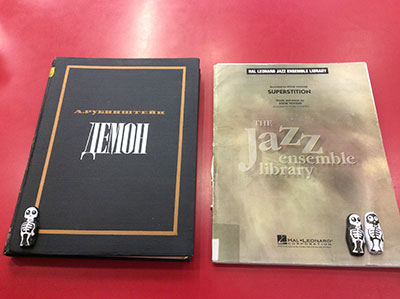
Rubinstein, A. (1968). Demon; opera v. trekh deistviiakh. Vocal Score. Moskva: Muzyka.
Wonder, S. (2005). Superstition. Hall Leonard jazz ensemble library. United States: Jobete Music.
Halloween. It’s not just a night for dressing up as your favourite superhero and nagging your neighbours for candy. Halloween finds its origins in a pagan Celtic feast called Samhain that marked the end of summer. Instead of trick-or-treating, ancient Celts may have sacrificed animals (or even humans!) to keep evil spirits at bay. In early medieval times, the feast became Christianised as All Hallows Eve, the start of Hallowtide, a time for remembering the dead.
For some, 31 October is the night the dead walk among us, rising from the underworld to toy with us mortal souls. Such mysticism has often caught the imagination of composers, seen with many musical depictions of the infernal. Ghosts, witches, demons and all other kinds of supernatural beings have inspired many terrifying pieces of music. Interestingly, much music which has such ethereal themes often features the tritone, a unit of music once believed to be ‘the devil’s interval’. The tritone – unsettling to the ear since it sounds unstable – features in the hellish scenes of such operas as WA Mozart’s Don Giovanni and Charles Gounod’s Faust. More recently, it has often featured in the scores of horror films including The Omen.
From Charles Ives’ Halloween to Michael Jackson’s Thriller – or any other freaky CDs, books or scores – the Music and Dance Library collection has something to indulge your ghoulish side this Halloween. To get you in the mood you can listen to a performance of the “March to the Scaffold” and the “Witch’s Sabbath” from Berlioz’ Symphonie Fantastique. This performance by the Orchestre de Paris was conducted by Christoph Eschenbach at the BBC Proms 2001 and is available on the e-video site, Classical Music in Video.
Marie-Claire Taylor, Music and Dance Library
